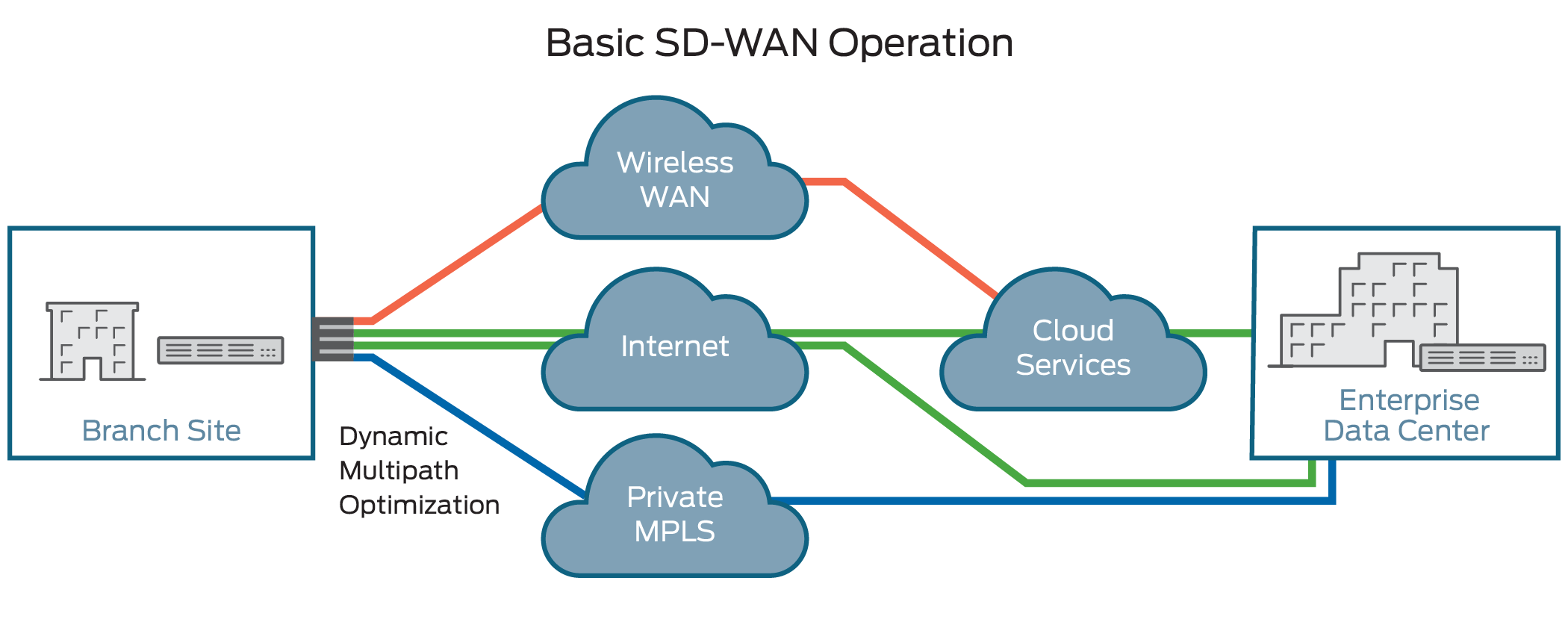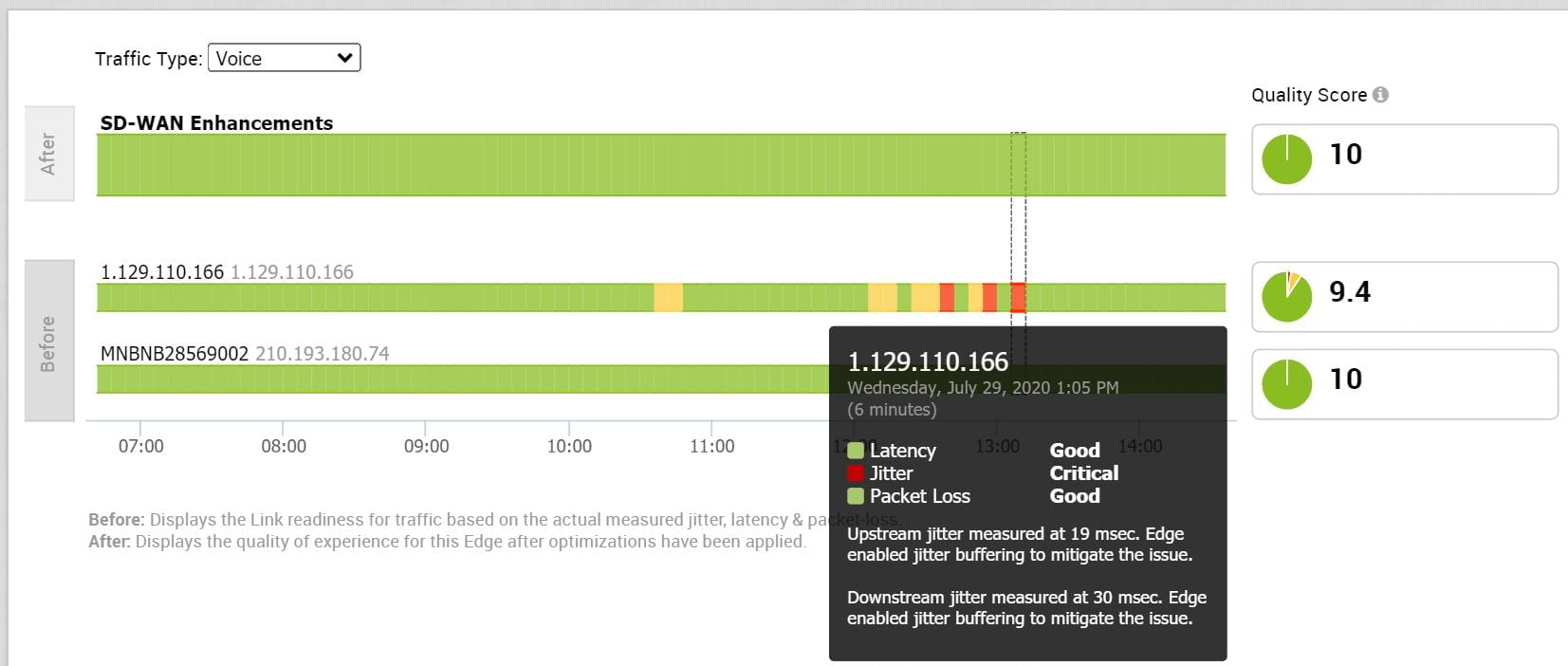GDMS to deliver Managed SD-WAN Services in Laos
What is SD-WAN?
A software-defined wide-area network (SD-WAN), is a network that is abstracted from its hardware, creating a virtualized network overlay.
Enterprise customers can remotely manage and quickly scale this overlay, which can extent over large number of sites and geographical distances. It is one of the application of software-defined networking (SDN).
An SD-WAN can connect hundreds of branch locations to one or multiple central hub offices or data centers. Because it is abstracted from hardware, it is more flexible and available than a standard WAN.
It relies on four key principles:
- Centralized management
- Elastic traffic management
- Edge connectivity abstraction
- WAN virtualization
SD-WAN is huge
According to P&S Intelligence, “the global SD-WAN market is expected to witness an explosive CAGR of 38.6% during 2020–2030. At this rate, the revenue generated from the sale of such solutions would rise to $43.0 billion by 2030, from merely $1.4 billion in 2019.”
Why use SD-WAN?
The sales pitch for SD-WAN is that it simplifies the deployment of new branches as the installation is completely plug-and-play. Once the SDWAN edge device is connected to the network, the cloud-based orchestrator detects it and informs the network administrator who just has to push the preconfigured policy to the new edge. In a matter of minutes, the new branch is online and completely compliant security-wise with the rest of the network.
SD-WAN also aims to improve the overall network uptime by offering fast failover and dynamic traffic management capabilities.
As SDWAN motto is to be completely abstracted from the infrastructure layer, it does not relate anymore to the underneath technology, it considerably reduces the complexity. No matter how the branch is connected to the network, SDWAN implementation is always the same.
Plus, SDWAN offers fast failover by monitoring in real-time the availability and performance of each upstream. It also has the capability to shift network traffic if the upstream is degraded which was complex to achieve with traditional WAN.
In a nutshell, a good SD-WAN solution can be a real blessing for IT managers as it simplifies not only the implementation but operation and maintenance (O&M) activities as well. It also gives the technical team complete visibility on the enterprise network from a single dashboard. It is also extremely easy to audit as the configuration is centralized.
How is SD-WAN a good fit for Laos?
Now, that we have set the scene about SD-WAN, let’s discuss the particular case of SD-WAN in Laos and why we believe this is a great technology for the country at this moment in time.
As we have discussed extensively, SD-WAN provides significant benefits to enterprises:
1. SDWAN eases the implementation of Disaster-Recovery Plans
According to Wikipedia, “Disaster Recovery involves a set of policies, tools, and procedures to enable the recovery or continuation of vital technology infrastructure and systems following a natural or human-induced disaster”. Failing to design and implement DR puts businesses at risk of data loss which can lead to economical loss or worst bankruptcy.
Which the emergence of virtualization and cloud-based solutions, replicating workloads from site to site has never been simpler. But activating a simple replication feature is by no means enough to achieve a disaster recovery plan.
One of the most complex parts of a Disaster Recovery Plan is to design how remote users resume access to business applications through a disaster scenario. As SD-WAN is completely abstracted of the physical layer and centrally managed, it makes a great case for ensuring that all traffic is redirected to the disaster site.
SD-WAN can help to build and operate a point to multipoint network between the branches and a DR site in a few easy steps. The leading SDWAN solutions in the market are also compatible with the most popular private and public cloud providers (VMware, AWS, Azure, Google Cloud, Alibaba) which enable enterprise customers to quickly deploy a hybrid approach with a Disaster Recovery Site in the cloud.
2. SDWAN improves reliability and performance
SD-WAN is a perfect solution to implement site redundancy. The technology is entirely agnostic of the underneath infrastructure which means that the company looking to implement SD-WAN can leverage existing connectivity no matter the medium.
Furthermore, SDWAN runs seamlessly over Fiber, xDSL, Wifi, 3G, and 4G Mobile Data, even VSAT. It lies on OSI Layer 3 and works seamlessly over any Internet and MPLS connectivity.

By implementing SD-WAN on top of two diverse Internet connections, the enterprise can obtain high availability and improve user experience.
Furthermore, SD-WAN provides the capability to tag applications and protocols that are critical to the business (E.g. VoIP, Videoconference…) and ensure that in case of performance degradation or unavailability of one of the upstream link, these get priority over non-business-critical applications.

SDWAN also optimizes network performance. It monitors the characteristics and real-time performance of the upstreams and steers packets to achieve optimal performance.
3. SDWAN is cost-effective
One of the sale argument of SD-WAN is also the cost reduction on the underlying infrastructure as SD-WAN limit the enterprise investment in private lines as SD-WAN works perfectly over standard Internet services.
In Laos, this argument is quite relevant as MPLS connectivity is expensive, at least 10x more expensive than broadband internet access.
For those looking to cut down costs, a solution to explore could be to use home / SME broadband connectivity to protect an existing enterprise dedicated uplink with SD-WAN. The current price for a 10mbps home broadband in Laos is around 400,000 Kips ~$44 per month which makes an easy business case for a redundant solution.
Another cost reduction opportunity is on the Internet connectivity of the main site.
For security reasons, enterprise IT administrators usually implement one or two Internet gateways for an entire organization. These gateways are usually located at the company data center or headquarter.
This to ensure that Internet traffic goes through all the Internet security policies no matter where the user is located.
As more and more applications are hosted in the public cloud such as Office365, or Salesforce, Internet traffic keeps growing for the enterprise.
Enterprises that implement a centralized firewall/gateway to access the Internet are somehow billed twice for Internet bandwidth. First, at the branch level where the Internet is the underneath technology for the point to multipoint WAN network. Second, at the HQ level when the traffic goes out to the Internet.
As SDWAN can implement consistent security policies across the entire organization, it is absolutely possible to let the internet traffic of the branch exits directly at the branch level, therefore, reducing drastically the internet usage at the HQ level.
4. SDWAN centralized management could be outsourced to a Managed Service Provider such as GDMS
As SDWAN is centrally managed, it reduces the need for technical resources across your network. The complete network and security infrastructure can be managed from the SDWAN orchestrator sitting in the enterprise cloud or the public cloud.
With years of experience in the IT and Telecom field, GDMS can help enterprises in Laos implement SD-WAN in a managed service fashion, offloading the IT department from the day-to-day support and operation and allowing them to focus on new innovative projects and digital transformation.
5. SDWAN is your gateway to public cloud
SD-WAN can be deployed easily in the cloud. If you take a look at AWS marketplace for instance, you will find 45 SD-WAN products readily available for deployment. Among them, the top brands for SD-WAN:
- VMware SD-WAN by VeloCloud Virtual Edge
- Cisco Cloud Services Router (CSR) for SD-WAN
- Citrix SD-WAN Standard Edition
- CloudGenix ION SD-WAN Virtual Appliance
- Riverbed SteelConnect Gateway (SD-WAN)
- Silver Peak Unity EdgeConnect for AWS
- Fortinet FortiGate Next-Generation Firewall
More and more companies these days are adopting a hybrid cloud strategy. A hybrid cloud is a mixture of a private cloud (usually the enterprise data center) combined with the use of public cloud services like AWS or Azure. The objective is to combine services and solutions from a selection of cloud providers to create a unified and consistent computing environment.
SD-WAN fulfills this need for consistency by implementing a standard set of network and security policies across the board.
Conclusion
GDMS is a registered VMware partner in Laos and Myanmar. As an SD-WAN Managed Service Provider, GDMS is committed to supporting our clients with their digital transformation projects.
We specialize in telecom and IT network architecture, deployment, vendor selection, and management.
Our goal is to help enterprise customers implement SD-WAN solutions and services, ensuring a high level of security, improved performance for a lower cost.













